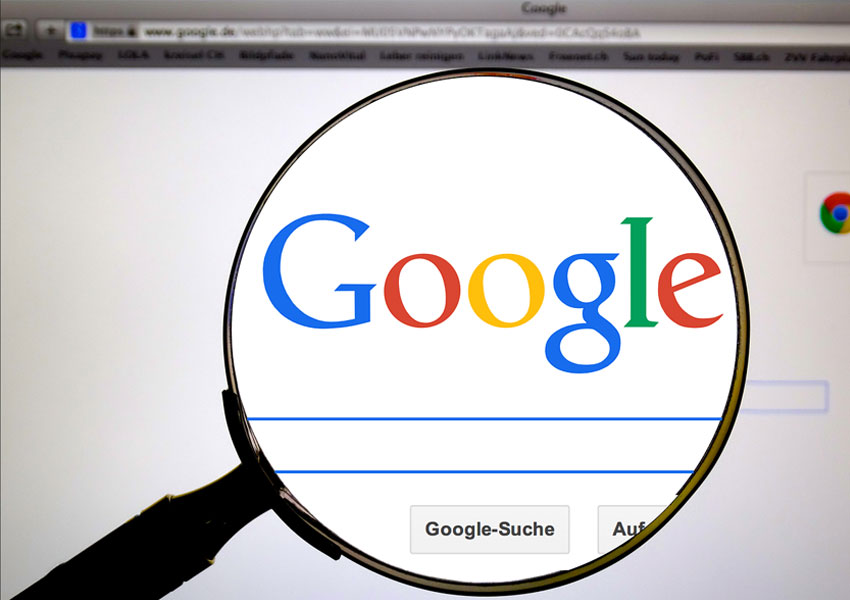Introduction to Google Ranking Strategies
To rank higher on Google, understanding the correlation between search engine optimization (SEO) and Google ranking is crucial. SEO plays a vital role in improving a website’s visibility and attracting organic search traffic, which is essential for online businesses looking to reach a larger audience. Various factors influence Google ranking, including on-page and off-page optimization strategies, the quality of content, backlinks, mobile optimization, user experience, and adherence to Google’s algorithm updates.
For example, consider a local business specializing in eco-friendly home products aiming to boost its online presence and attract more customers. By implementing effective SEO strategies such as optimizing product pages with relevant keywords, creating engaging blog content on sustainable living tips, and securing backlinks from reputable environmental websites, the business can significantly improve its Google ranking and attract a broader audience interested in eco-conscious products.
Moreover, the importance of organic search traffic cannot be overstated when it comes to Google ranking. Websites that rank higher organically tend to receive more clicks and visits, leading to increased brand visibility, credibility, and ultimately, higher conversion rates. By implementing effective SEO strategies, businesses can ensure that their websites appear prominently in search results, capturing the attention of potential customers actively looking for products or services they offer.

Understanding Google’s Algorithmic Process
Google’s algorithm is a complex system that takes into account a multitude of factors to assess the quality and relevance of web pages in order to provide the most valuable results to users. Apart from the over 200 ranking factors, an essential element that influences Google ranking is E-A-T, which stands for Expertise, Authoritativeness, and Trustworthiness. This underscores the significance of presenting credible and reliable information to users, ultimately enhancing a website’s reputation and authority in the eyes of Google’s algorithm.
For instance, consider a health and wellness website seeking to improve its Google ranking for articles on fitness and nutrition. By emphasizing expertise in the field by showcasing credentials of certified nutritionists and fitness trainers, demonstrating authoritativeness through research-backed content, and building trust with user testimonials and reviews, the website can enhance its E-A-T signals and increase its visibility in search results.
Moreover, when it comes to technical aspects, elements like page speed, user experience, and mobile-friendliness are crucial determinants of a website’s performance in search engine results. For example, a website that loads quickly and offers a seamless user experience across various devices is more likely to rank higher on Google. Ensuring that your website is optimized for mobile devices not only caters to the increasing number of mobile users but also aligns with Google’s preference for mobile-first indexing, further boosting your chances of ranking well in search results.
On-Page SEO Optimization Techniques
When it comes to boosting your Google rankings, on-page SEO optimization techniques play a crucial role in signaling to search engines the relevance and quality of your content. One effective strategy is to leverage structured data markup, which helps search engines display rich snippets in search results, providing users with more information upfront and potentially increasing click-through rates. By utilizing schema markup, websites can enhance their visibility and stand out in search results, ultimately driving more organic traffic to the site.
Furthermore, focusing on the creation of high-quality and engaging content is paramount for successful on-page SEO. This involves not only incorporating target keywords strategically but also ensuring that the content is informative, valuable, and caters to the search intent of users. For example, a blog post that thoroughly addresses a specific topic, includes relevant keywords, and provides actionable insights is more likely to attract organic traffic and earn higher rankings on Google. By optimizing meta tags, headers, and image alt text with the right keywords, websites can improve their chances of being discovered by their target audience and outperforming competitors in search engine results pages.
Additionally, implementing keyword optimization strategies such as including long-tail keywords and latent semantic indexing (LSI) keywords can further enhance on-page SEO efforts. Long-tail keywords, which are longer and more specific search terms, help websites target niche audiences and improve their chances of ranking for specific queries. LSI keywords, on the other hand, are contextually related terms that confirm to Google the relevance and depth of content on a particular topic, further increasing the website’s visibility and authority in search results. By strategically incorporating these keyword variations throughout the content, websites can improve their Google rankings and attract more targeted traffic.
Off-Page SEO Strategies for Improved Ranking
Off-page SEO strategies play a vital role in improving a website’s ranking on Google by enhancing its domain authority and credibility. Acquiring backlinks from authoritative websites is a key tactic to boost a site’s reputation in the eyes of search engines. For instance, when a reputable website in the same industry links back to your content, it signals to Google that your site is a reliable and trustworthy source of information, consequently positively impacting your ranking.
Building relationships with influencers can also contribute to improved off-page SEO and organic visibility on Google. By collaborating with influencers in your industry or niche, you can leverage their audience and credibility to earn natural backlinks and increase your website’s authority. For example, a fashion brand partnering with a popular fashion blogger to showcase its latest collection can generate valuable backlinks and social proof, signaling to Google the website’s relevance and popularity within the fashion community.
Social media engagement is another effective off-page SEO strategy to boost Google rankings and drive traffic to your website. By actively sharing content, engaging with followers, and participating in relevant conversations on social platforms, websites can increase brand visibility and attract a wider audience. Additionally, social signals such as likes, shares, and comments can indirectly impact SEO by signaling to search engines the popularity and relevance of the content, potentially leading to improved rankings on Google.
Mobile Optimization and User Experience Importance
Google prioritizes mobile-first indexing, making mobile optimization crucial for ranking higher on the search engine. Websites that offer a seamless user experience across all devices, including responsive design and optimized site speed, are more likely to rank well on Google. By focusing on improving user experience and ensuring fast loading times, websites can enhance their visibility and ranking on Google search results.
Moreover, the rise in mobile device usage underscores the significance of mobile optimization for online success. For instance, a study by Google revealed that 61% of users are unlikely to return to a mobile site they had trouble accessing, highlighting the direct impact of mobile user experience on visitor retention and engagement. Therefore, investing in mobile optimization not only improves search engine rankings but also enhances user satisfaction and encourages repeat visits to the website.
In addition to mobile optimization, user experience encompasses various elements such as intuitive navigation, compelling visuals, and clear calls-to-action. Websites that prioritize user-centric design principles tend to have lower bounce rates and higher conversion rates, indicating a positive correlation between user experience and business outcomes. Ultimately, by aligning mobile optimization efforts with a comprehensive user experience strategy, websites can not only rank higher on Google but also foster lasting relationships with their target audience.
Google Algorithm Updates and Potential Penalties
Staying informed about Google algorithm updates is paramount for website owners looking to enhance their online visibility. Google frequently refines its search algorithms to provide users with the most relevant and high-quality content. For example, the BERT update in 2019 aimed to improve the understanding of search queries to deliver more accurate results. Website administrators need to stay vigilant and adapt their SEO strategies to align with these updates to maintain or improve their rankings on Google’s search engine results pages.
Moreover, avoiding common penalties is essential to safeguard a website’s ranking position and reputation. Penalties such as thin content, where pages lack substantive information, can significantly impact a site’s visibility. Additionally, keyword stuffing, the practice of excessively using keywords to manipulate rankings, and unnatural link building schemes can lead to penalties that lower a website’s search ranking. Adhering to Google’s quality guidelines and ensuring that content is relevant, engaging, and authentic can help mitigate the risk of penalties and enhance a website’s credibility in the eyes of both users and search engines.
Regularly monitoring Google algorithm updates and adapting SEO strategies accordingly is vital for maintaining and improving website rankings on Google. For example, the Google Panda update targeted low-quality content, penalizing websites with thin or duplicate content that offered little value to users. By staying informed about algorithm changes and proactively adjusting SEO tactics, website owners can protect their rankings and ensure long-term visibility in search results.

Leveraging Google Business Profile for Local Ranking
Optimizing your Google Business Profile is a fundamental strategy for boosting your local ranking on Google [2]. When you claim and update your business information, ensuring it is accurate, complete, and engaging, you significantly improve your visibility in local search results. For instance, entering comprehensive data like your physical address, phone number, category, and attributes can positively impact how well your Business Profile matches search queries, contributing to its relevance.
Responding to reviews promptly is crucial not only to show the value you place on customer feedback but also to enhance your business credibility and visibility. By engaging with your audience through reviews and adding photos and in-store products to showcase your goods and services, you can strengthen your online presence and attract more potential customers. Additionally, integrating Google Maps into your profile can further improve your local visibility, especially considering that distance, another key factor in local ranking, considers the proximity of search results to the user’s location. By leveraging these strategies effectively, you can enhance your local ranking on Google and attract more local customers to your business.
Google’s local ranking algorithm considers various factors such as relevance, distance, and prominence to determine the ranking of local businesses in search results. For example, a local coffee shop that optimizes its Google Business Profile with accurate information, responds to customer reviews promptly, and showcases its menu items through photos is more likely to rank higher for local searches related to coffee shops in the area. By focusing on these key elements and providing a positive user experience, businesses can improve their visibility and attract more foot traffic to their physical locations.

Crafting Engaging and SEO-Friendly Content
Crafting engaging and SEO-friendly content is essential for boosting Google rankings. An effective strategy involves incorporating long-tail keywords and semantic search terms that align with user search intent. For example, a travel blog targeting adventure enthusiasts may use long-tail keywords like “best hiking trails in the Rocky Mountains” to attract a specific audience interested in outdoor activities. By integrating these keywords naturally into the content, the blog can improve its visibility and ranking on Google search results.
Moreover, conducting comprehensive keyword research is crucial in understanding the topics and queries that resonate with the target audience. For example, a digital marketing agency looking to rank for SEO-related topics may analyze keyword trends to identify popular search queries such as “SEO best practices” or “SEO tools for small businesses.” By creating content around these trending topics and optimizing it with relevant keywords, the agency can enhance its online visibility and attract more organic traffic from search engines. Ultimately, by consistently delivering valuable, well-optimized content that meets user needs, websites can establish authority in their niche and improve their Google rankings over time.
In addition to keyword optimization, incorporating multimedia elements like videos, infographics, and interactive tools can further enhance the quality and appeal of content. For example, an e-learning platform offering online courses may supplement its written content with instructional videos, interactive quizzes, and downloadable resources to enrich the learning experience. By providing diverse and engaging content formats, the platform can cater to different learning preferences and increase user engagement, ultimately improving its chances of ranking higher on Google.
Monitoring Performance and Analyzing Data
Monitoring website performance and analyzing data play a crucial role in optimizing Google rankings. Utilizing tools such as Google Analytics enables website owners to gain valuable insights into their online presence by tracking metrics like website traffic, user behavior, and conversion rates. For example, by closely monitoring user engagement metrics like time on page and bounce rates, website owners can identify underperforming pages and take corrective actions to improve them, subsequently boosting their Google rankings.
Implementing A/B testing allows website owners to experiment with different variations of web elements such as headlines, call-to-action buttons, or page layouts to determine which ones resonate best with their audience. This data-driven approach helps in making informed decisions to optimize the website for higher user engagement and better search engine rankings. Additionally, analyzing exit pages can provide valuable insights into where visitors are dropping off the website, indicating potential issues that need to be addressed to improve overall user experience and ultimately enhance Google rankings.
Analyzing data from various sources, including Google Analytics, Google Search Console, and social media insights, can provide a comprehensive view of website performance and user engagement. For example, by tracking key metrics such as organic traffic growth, conversion rates, and top-performing keywords, website owners can identify areas for improvement and prioritize optimization efforts to enhance their Google rankings. By continuously monitoring performance data and making data-driven decisions, websites can adapt to changing trends and user preferences, ultimately improving their visibility and competitiveness in search results.

Conclusion: Strategies for Sustainable Google Ranking Success
Achieving sustainable Google ranking success involves a multifaceted approach that combines on-page and off-page SEO strategies, user experience optimization, content creation, and continuous performance monitoring. By understanding the key factors that influence Google rankings and adapting to algorithm changes, website owners can improve their online visibility and attract more organic traffic. For example, a local business that consistently updates its Google Business Profile, engages with customers through reviews, and provides high-quality products or services can enhance its local ranking and attract more customers to its physical location.
Emphasizing the importance of continuous SEO efforts, adaptation to algorithm changes, and data-driven optimization is essential for long-term ranking success on Google. By staying informed about industry trends, monitoring performance metrics, and implementing best practices in SEO, websites can maintain their competitive edge and improve their visibility in search results. For instance, a digital marketing agency that regularly updates its content with relevant keywords, builds quality backlinks, and analyzes user engagement data can enhance its Google rankings and establish itself as a reputable source of information in the industry.
Encouraging regular performance tracking and optimization is key to sustaining Google ranking success over time. By leveraging tools like Google Analytics, A/B testing, and SEO audits, website owners can gain valuable insights into their online performance and make informed decisions to improve their rankings. For example, a skincare brand that monitors website traffic, analyzes customer behavior, and refines its content strategy based on data insights can enhance its Google rankings and attract a loyal customer base interested in skincare products. By prioritizing continuous improvement and adaptation to changing algorithms, websites can achieve sustainable success in Google rankings and drive long-term growth and visibility in the digital landscape.